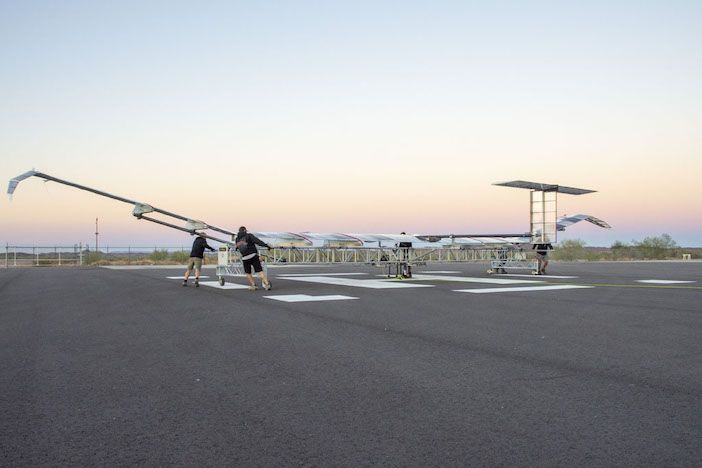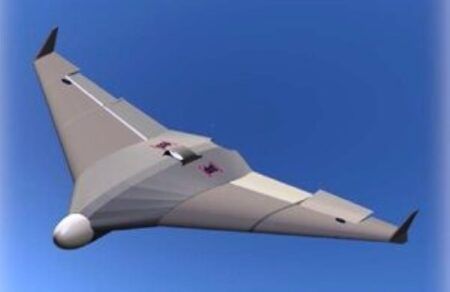Airbus has successfully completed the latest test flight campaign for its Zephyr High Altitude Platform Station in Arizona, USA.
The solar-powered Zephyr S, which Airbus calls a High Altitude Pseudo-Satellite (HAPS) operates in the stratosphere at an average altitude of 70,000ft above weather and air traffic. The drone has a wingspan of 25m (82ft) and weighs 75kg.
The Zephyr set the current 26-day world record for the longest duration flight in July 2018 from the Arizona-test site, achieving a dawn altitude of 60,000ft as well as its highest altitude of 71,140ft.
Development of the Zephyr can be traced back to UK-based defense firm Qinetiq in 2003. The development program was sold to Airbus Defense and Space, known at the time as EADS Astrium, in 2013.
The 2020 flight campaign was conducted during the first three weeks of November and focused on testing the aircraft’s agility, control and operations and built on previous campaigns that showed that the unmanned aerial system (UAS) could operate during night and day.
Airbus said that engineers tested lower altitude flying and early stage transition to the stratosphere. The testing also allowed for the validation of a new flight planning tool suite and the development of operational concepts through multiple, varied flights in short succession.
Jana Rosenmann, head of unmanned aerial systems at Airbus said, “Having proven stratospheric flight, we continue to further mature the operational system with the objective to be more flexible and robust in order to meet our customer needs. The outcome of this campaign is a valuable contribution to the full flight programme next year.”
The campaign team used a Zephyr aircraft fitted with new software control systems and specific flight test instruments, plus associated lighter test aircraft to conduct multiple successful test flights during November.
The flights demonstrated take-off, climb, cruise, upgraded flight control and descent phases, followed by successful landings. The objectives of the test campaign were all achieved showcasing a more resilient and capable aircraft.
Airbus plans to market the Zephyr to both commercial and military customers alike as a “sense and see” platform for disaster management, such as monitoring the spread of wildfires and as a persistent surveillance and communications platform.





